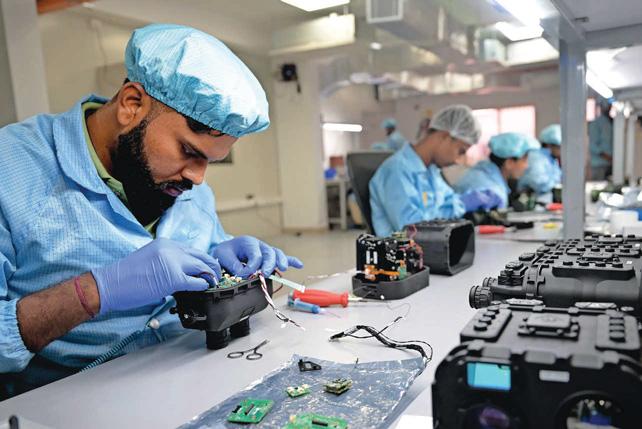
India has the world’s third largest startup ecosystem, but arguably the world’s largest defence startup ecosystem. This amazing transformation happened in the last five to six years. In February 2018, the ministry of defence introduced a draft defence production policy with ambitious goals—triple defence industry turnover to 01.75 lakh crore and increase defence exports nearly 15-fold to 025,000 crore by 2025. It is in this policy that startups were envisioned to foster an innovation ecosystem.
Very few believed that startups could significantly impact defence needs. Innovation for Defence Excellence (iDEX) was launched in April 2018 by Prime Minister Narendra Modi, marking a significant policy initiative. It established open startup challenges, later termed Defence India Startup Challenges (DISC), aligned with the requirements of the Indian armed forces. Startups were invited to offer solutions and the most promising ones received financial support of up to 01.5 crore, contingent on achieving milestones and matched or higher investment from the startups.
Around this time, an unexpected request arrived at the defence ministry from the US embassy— they sought collaboration with an Indian startup specialising in military swarms, a technology they found unique and compelling. This surprised the ministry, accustomed to being the seeker rather than the sought-after, especially with respect to the US. As secretary, defence production, I delved deeper into the matter, consulting with ministry officials and armed forces officers who were equally unaware of this startup and its groundbreaking innovations. My curiosity led me to the founder, who was a retired Indian Air Force officer. He revealed his futile attempts to engage with the ministry and the IAF. Meeting him was enlightening—it reinforced my belief in the potential of startups and their inventive teams to drive India's defence innovation ambitions forward.
この記事は THE WEEK India の August 18, 2024 版に掲載されています。
7 日間の Magzter GOLD 無料トライアルを開始して、何千もの厳選されたプレミアム ストーリー、9,000 以上の雑誌や新聞にアクセスしてください。
すでに購読者です ? サインイン
この記事は THE WEEK India の August 18, 2024 版に掲載されています。
7 日間の Magzter GOLD 無料トライアルを開始して、何千もの厳選されたプレミアム ストーリー、9,000 以上の雑誌や新聞にアクセスしてください。
すでに購読者です? サインイン

Forging the future
As the curtain falls on 2024, I take pride in the extraordinary milestones achieved under the leadership of Prime Minister Narendra Modi. This year stands as a testament to the Modi government's resolve to forge a resilient and forward-looking Bharat. From groundbreaking advancements in infrastructure to visionary global initiatives, these efforts resonate deeply with the vision of Viksit Bharat.

Our strange democracy
Abraham Lincoln is lauded as among the very best presidents the US ever had: the statesman par excellence successfully steered the nation through the devastating and perilous years of the American civil war. Not only did Lincoln manage to keep his country united, he also ensured the passage of the 13th amendment to the US constitution, which abolished slavery.

Five years of post-pandemic fashion
It has been five years since we discovered what Covid-19 was, and five years since it disrupted the world forever. The World Health Organization activated their emergency systems on January 1, 2020, and informed the world by January 4, 2020. By the end of that week, they had set guidelines for various countries to follow. Comparable to the Spanish flu of 1918, more than 7 million people have died of Covid according to official data. Unofficially, no one has an idea. WHO has just this week asked China to provide critical data to understand the virus's origins as a “moral and scientific imperative”.

Community spirit
Rhythm of Dammam opens a window to the world of African-origin Siddis of Uttara Kannada

'Breaking' down a scandal
Society Girl is not just a case study of a high-profile death in Pakistan but also a stark commentary on media trials

Progress card
Jasmine Shah's book tells you what the AAP has achieved in Delhi in the last 10 years

SENSE IN NONSENSE
In his latest book of poetry, Ruskin Bond is at his funniest

Get ready for Trump bump
The ‘butterfly effect’ is a beautiful, mysterious metaphor of the planet’s interconnectedness.

QUIET FLOWS THE FAITH
The melding of an ancient amorphous faith and the latest science; of an antique tradition and new practices; ways of life older than memory and new expressions is happening at Prayagraj in Uttar Pradesh.

Trash to treasure
How a weed-choked Dal Lake spurred Maninder Singh's journey to become a waste management visionary